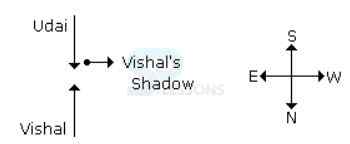 Introduction
Introduction
Mains Examination is important to qualify the provisional allotment. EPFO Assistant Main Practice & Test section allows candidates to understands the pattern of the exam and the expected questions that would appear in the actual test. SPLessons has made a sincere effort to provide a list of EPFO Assistant Mains Exam related questions through the article EPFO Assistant Mains Practice Test.
 Pattern
Pattern
| EPFO Assistant Exam Pattern - Mains | |||||
|---|---|---|---|---|---|
| S. No. | Name of the Test (Objective Tests) | No. of Questions | Maximum Marks | Duration | Version |
| 1. | Reasoning/ Intelligence | 40 | 60 | 35 Minutes | Bilingual |
| 2. | General/Economy/Financial Awareness | 40 | 40 | 20 Minutes | |
| 3. | English Language | 30 | 40 | 30 Minutes | |
| 4. | Quantitative Aptitude | 40 | 60 | 35 Minutes | English |
| 5. | Descriptive Paper (English Language with emphasis on comprehension and analysis) | 3 (letter, précis’, comprehension) | 30 | 45 Minutes | English |
| Total | 153 Questions | 230 Marks | 2 hours 45 Minutes | ||
 Samples
Samples
Analogies:
A good way to figure out the relationship in a given question is to make up a sentence that describes the relationship between the first two words. Then, try to use the same sentence to find out which of the answer choices completes the same relationship with the third word.
1. Odometer is to mileage as compass is to
-
A. speed
B. hiking
C. needle
D. direction
-
A. Chicken
B. Snake
C. Swan
D. Crocodile
E. Frog
-
A. 1
B. 2
C. 3
D. 4
-
A. East
B. West
C. North
D. South
-
A. 1
B. 2
C. 3
D. 4
-
A. Alfredo's offers fine Italian cuisine and an elegant Tuscan decor. Patrons will feel as though they've spent the evening in a luxurious Italian villa.
B. Pancho's Mexican Buffet is an all-you-can-eat family style smorgasbord with the best tacos in town.
C. The Parisian Bistro is a four-star French restaurant where guests are treated like royalty. Chef Dilbert Olay is famous for his beef bourguignon.
D. Marty's serves delicious, hearty meals in a charming setting reminiscent of a baseball clubhouse in honor of the owner,Marty Lester, a former major league baseball all-star.
-
A. Brother
B. Uncle
C. Cousin
D. Father
-
A. 71 years
B. 72 years
C. 74 years
D. 77 years
-
A. 7
B. 10
C. 12
D. 13
History:
1. The Battle of Plassey was fought in
-
A. 1757
B. 1782
C. 1748
D. 1764
-
A. military affairs
B. the state treasury
C. the royal household
D. the land revenue system
-
A. 3:5
B. 2:3
C. 2:4
D. 3:4
-
A. 1911
B. 1913
C. 1936
D. 1935
-
A. Ganga
B. Cauvery
C. Narmada
D. Godavari
-
A. 45
B. 65
C. 35
D. 25
-
A. defence expenditure
B. expenditure on economic services
C. expenditure on social and community services
D. grant to states
-
A. chemical industry
B. bureau
C. corporation
D. financial institution
-
A. Oxygen
B. Hydrogen sulphide
C. Carbon dioxide
D. Nitrogen
-
A. Phosphorous
B. Bromine
C. Chlorine
D. Helium
Synonyms:
1. CORPULENT
-
A. Lean
B. Gaunt
C. Emaciated
D. Obese
-
A. Soft
B. Average
C. Tiny
D. Weak
-
A. has done
B. did
C. does
D. had done
E. No correction required
-
A. RSQP
B. PQRS
C. SQPR
D. QSRP
-
A. To gain prominence
B. To praise oneself
C. To confess without of reserve
D. To destroy before it blooms
E. None of these
-
A. an alarming journey
B. a commanding situation
C. a journey into outer space
D. a frightful battle.
-
A. There was a shower of debris.
B. Jack was yelling.
C. A catastrophe was imminent.
D. The moon was looming close and big.
-
A. that the sun was very hot
B. that there was no strong wind
C. that the air was unpolluted
D. none of above
-
A. producer:theatre
B. director:drama
C. conductor:bus
D. thespian:play
-
A. We discussed about the problem so thoroughly
B. on the eve of the examination
C. that I found it very easy to work it out.
D. No error.
-
A. After being driven to the museum, Professor Kumar was dropped at his hotel.
B. Professor Kumar was being driven dropped at his hotel.
C. After she had driven Professor Kumar to the museum she had dropped him at his hotel.
D. After she was driven Professor Kumar to the museum she had dropped him at his hotel.
-
A. with
B. over
C. on
D. round
Computation of whole numbers:
1. Which one of the following is not a prime number?
-
A. 31
B. 61
C. 71
D. 91
-
A. 47.095
B. 47.752
C. 47.932
D. 47.95
-
A. 9
B. 11
C. 13
D. 15
-
A. 2700
B. 2900
C. 3000
D. 3100
-
A. 1.12
B. 1.2
C. 1.25
D. 1.30
-
A. 1
B. 2
C. 3
D. None of these
-
A. 0
B. 1
C. 10
D. 19
-
A. 3.5 years
B. 4 years
C. 4.5 years
D. 5 years
-
A. Rs. 9000.30
B. Rs. 9720
C. Rs. 10123.20
D. Rs. 10483.20
E. None of these
-
A. 15
B. 16
C. 18
D. 25
-
A. Rs. 10
B. Rs. 10.40
C. Rs. 15.20
D. Rs. 13
-
A. Rs. 8400
B. Rs. 11,900
C. Rs. 13,600
D. Rs. 14,700
-
A. 1 : 3
B. 2 : 3
C. 3 : 4
D. 4 : 5
-
A. 14 km
B. 15 km
C. 16 km
D. 17 km
-
A. 15
B. 16
C. 18
D. 25










